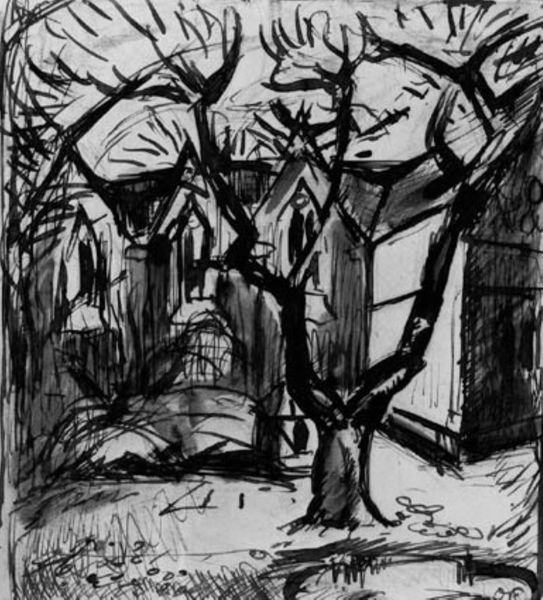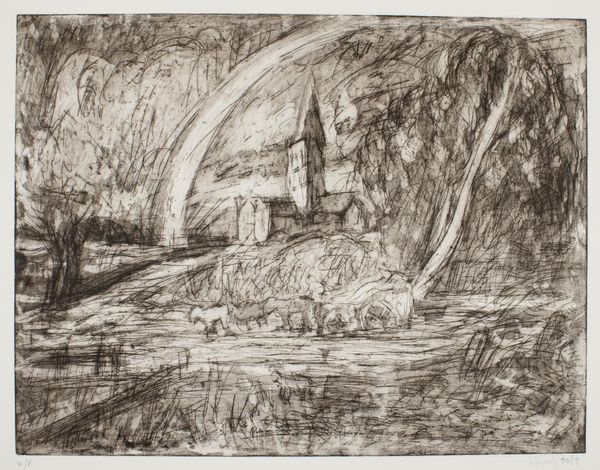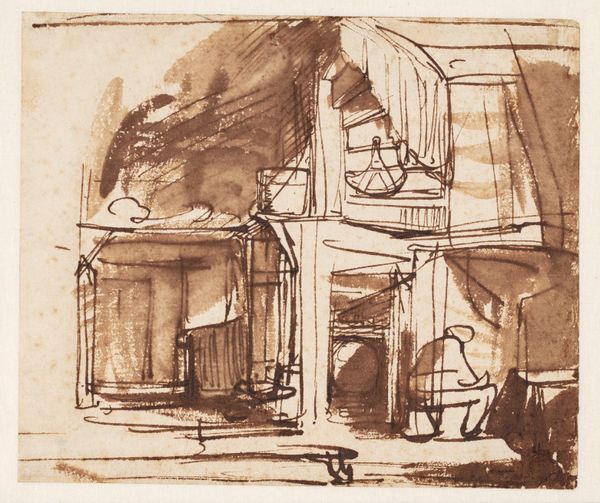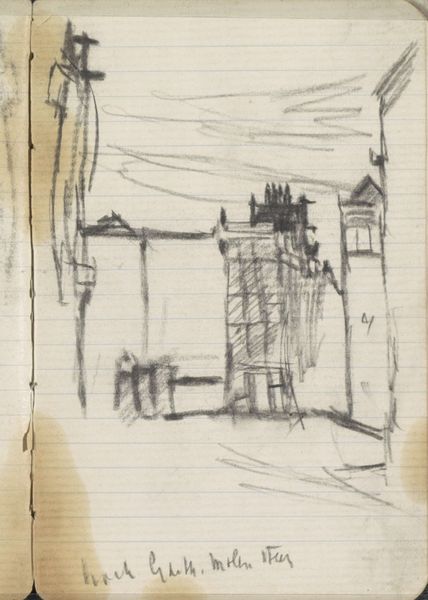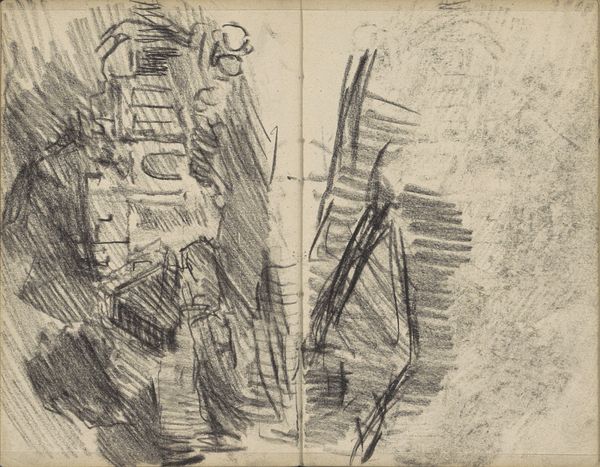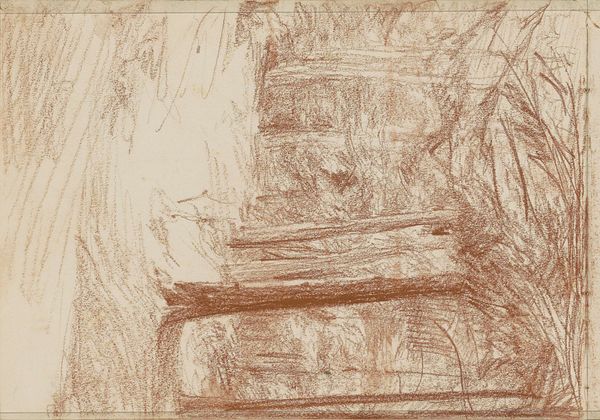
lithograph, print
#
lithograph
# print
#
landscape
#
figuration
#
expressionism
Dimensions: 277 mm (height) x 380 mm (width) (billedmaal)
Editor: We’re looking at "Kirkegård med tre gravstene" - "Churchyard with Three Gravestones" - a lithograph from 1929 by Henry Nielsen, currently at the SMK. It definitely evokes a somber mood, doesn’t it? The composition is quite striking with the looming trees. What do you see in this piece from a formalist perspective? Curator: Certainly. Let's begin with the deployment of line. Note how the artist uses jagged, broken lines to depict the trees and foliage. This contrasts sharply with the more solid, geometrical forms of the gravestones. It creates a sense of unease, a visual disruption. Do you observe how this interplay contributes to the emotional tension within the work? Editor: Yes, definitely. The sharp, broken lines in the background seem almost agitated, whereas the gravestones in the foreground have a calmer feel, even though the lithographic medium prevents their shapes from being clean and even. I think this piece does fit into Expressionism because it conveys emotions that distort the traditional landscape setting. Curator: Precisely. Now consider the distribution of value. The heavy blacks are strategically placed to guide the eye. They draw you into the center, specifically to the cluster of gravestones, then let your eyes move through the dark spaces. What feeling emerges from the tension of this movement? Editor: It’s like being pulled towards the inescapable center of grief but also held back by the darkness of loss and pain, symbolized by those heavy blacks. It shows that it is not just the objects represented, but also their shapes and tonal relationship. Thank you, I think I now perceive so much more clearly what Nielsen sought to represent. Curator: Indeed. Through close visual analysis, we can unveil how form embodies and evokes emotive potential.
Comments
No comments
Be the first to comment and join the conversation on the ultimate creative platform.







